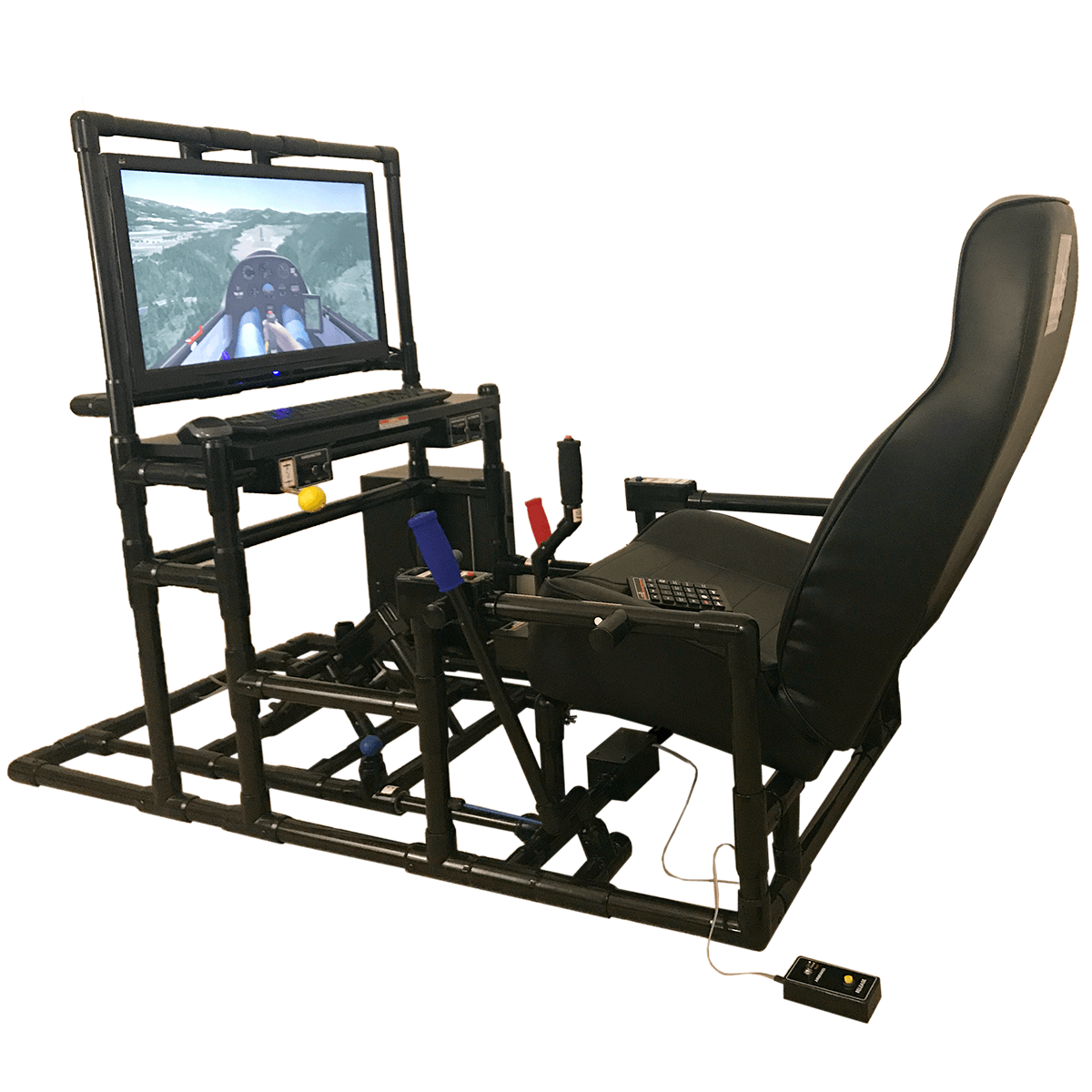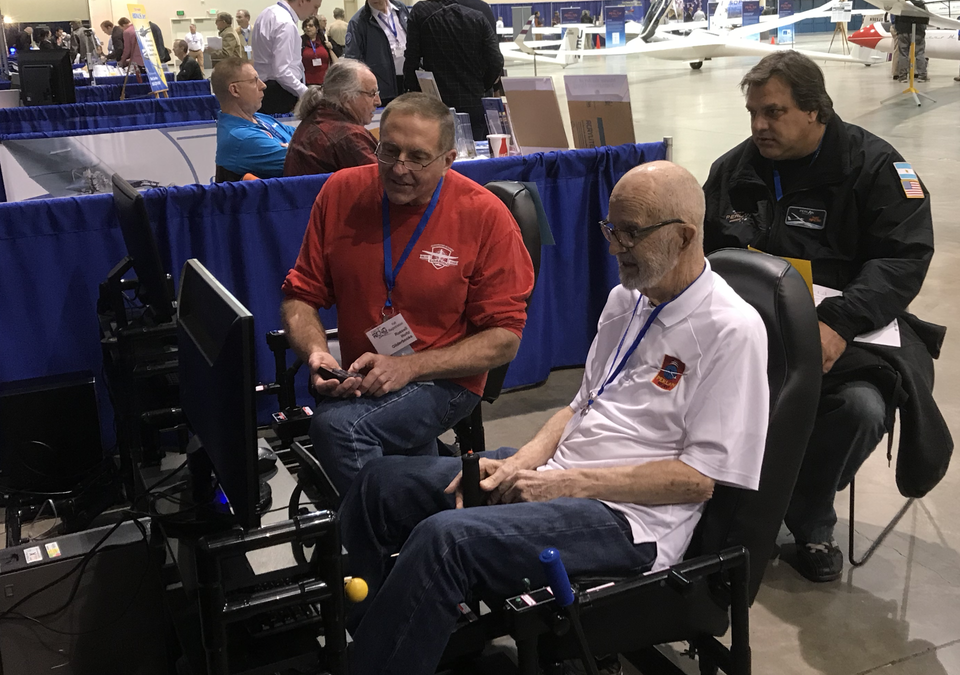A Note to Sim Training Naysayers
Russell Holtz • January 30, 2019
One of the things that experienced glider pilots and instructors say is that even though they have tons of experience, they can NOT fly a glider well in Condor, especially on tow. There are two reasons for this that they need to understand.
If they are using a joystick on a table, they are controlling the stick using their shoulder muscles, not their fingertips like they would in a glider. This means that while they KNOW what to do with the stick, they have to learn a different way to cause those movements, which takes them back to being a beginner again. In the Mach 0.1, they would have their forearm resting on their thigh, just like in the real glider, and controlling the stick with their fingertips. We have found that at the conventions, CFI-G’s who say Condor is a waste of time change their opinion after flying in the Mach 0.1. Without exception, every experienced pilot was able to fly the tow on Condor when they were in the Mach 0.1.
Second, experienced pilots are hardwired to expect to feel the movement of the glider when they move the controls. When they don’t get this feedback, they instinctively move the controls more, leading to over controlling. Again, this makes some instructors think that Condor is not accurately modeling how a glider behaves. When a student, with little or no experience gets in the sim, they are controlling the glider based on visual cues, and don’t have the hard wired response yet of expecting to feel the gliders movement, so they don’t have this problem with over controlling.

All of the Benefits of the Original Design The MACH 0.1 allows students and pilots to do basic training, master core concepts, and explore new scenarios using soaring flight simulator software in a realistic glider cockpit configuration. The natural control layout includes stick, adjustable rudder pedals, spoilers, wheel brake, landing gear, trim, and a tow release handle. Reduce time & costs involved in training Make use of inclement weather days Practice emergency situations Concentrate on specific maneuvers Keep students engaged Enjoy more soaring time Plus Updated Design Features 4x greater control precision Integrated monitor mount Simplified assembly Modular, PCB-based design for increased reliability and serviceability
Still Available at the economical price of just $1899 Choice of Integrated Monitor Mounts The new version of the Mach 0.1 Simulated Glider Cockpit includes an integrated monitor mount. This keeps the monitor from accidentally getting knocked over. The Standard monitor mount will fit monitors with an outside width of up to 24.25 inches. Many 27" monitors fit this criterion. This mount protects the monitor when the simulator is being moved. The screen of the monitor is set back from the frame, so it can be laid on a flat surface without touching. The standard mount accommodates monitors with a 100mm hole pattern. The Large monitor mount will hold monitors with a weight of up to 20 pounds. The large mount accommodates monitors with either a 100mm or 200mm hole pattern. Please Note: Instructor Remote is available as an optional add-on. Computer, monitor, monitor screws, keyboard, mouse, and Condor software NOT included.

In the summer of 2018, the United States Air Force Academy began using Mach 0.1 Simulated Glider Cockpits as part of their "Glider Airmanship" course. The data collected from the course shows that the solo rate for students who completed the course in 2018 was more than double the solo rate of the previous two years.



